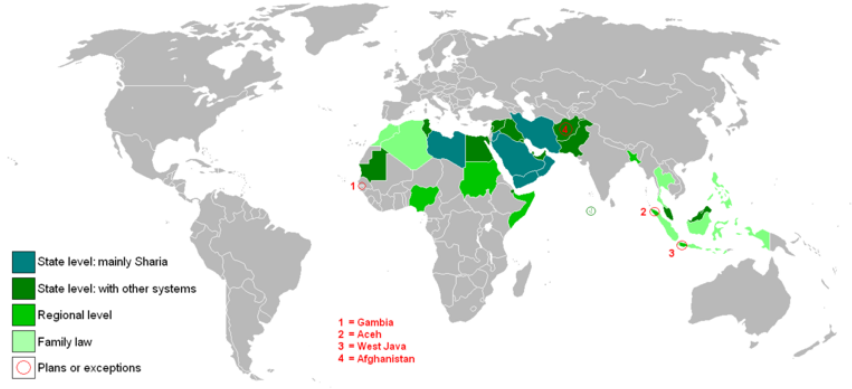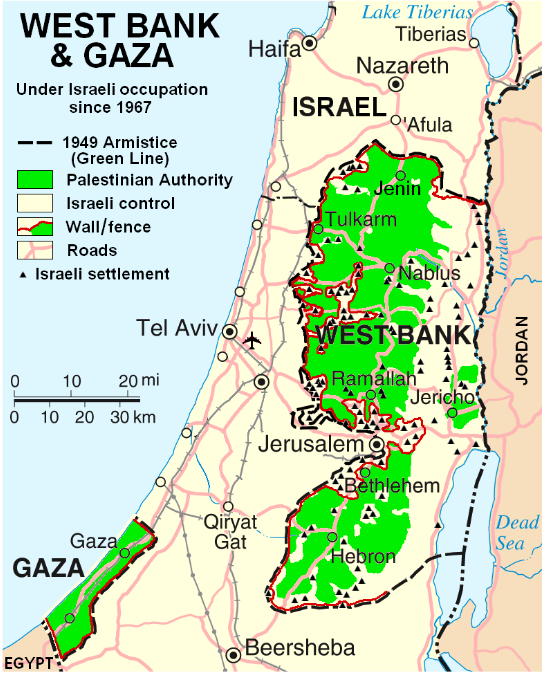7.6: Religious Conflict in North Africa and Southwest Asia
- Page ID
- 131909
The rise of ISIS is representative of many key issues of geography in this region: the intersection of religious values, political instability, and control of territory and resources. ISIS represents a fundamentalist view of Islam, known as Islamism. Islamism is characterized by a strict, literal interpretation of the Qur’an, conservative moral values, and the desire to establish Islamic values across the entire world. Militant Islamist movements have inspired the violent ideology of jihadism, which seeks to combat threats to the Muslim community. (The term "jihad" has been interpreted differently over the centuries. The word itself means "struggle" in Arabic.)
Islamism and jihadism represent a small portion of global Muslim beliefs. A Pew Research Center survey found that in most countries, over three-quarters of the population of Muslims reject Islamic extremism and a majority expressed concern over religious extremism. Furthermore, even in North Africa and Southwest Asia, only one-quarter of Muslims believed that tensions within the community between more religious and less religious Muslims represented a major problem. In every religious community, there are fundamental interpretations of scripture and both conservative and liberal understandings of theology.
For traditional Muslims, religious life and personal life are intertwined, and thus political structures in this region have often reflected religious values. Several states in North Africa and Southwest Asia have declared sharia law, meaning that Islamic religious law applies in the court system (Figure \(\PageIndex{1}\)). Islamist groups in particular have often utilized a strict and harsh interpretation of sharia. In many countries, most Muslims believe that sharia should be the state law, but many believe it should only apply to the country’s Muslim population. In addition, Muslims differ in their interpretation of sharia, with some only supporting sharia for personal disputes but not accepting sharia’s harsh punishments for various offenses.

In a region where political boundaries were often contrived by outside forces, governments have struggled with their relationship to minority religious and ethnic groups. Following World War II, the modern state of Israel was created to partition the British-controlled Palestine into Arab and Jewish areas. A series of wars between Israel and the surrounding Arab states left Israel as an independent state in control of the territories of the West Bank and the Gaza Strip, which were originally intended to be Palestine. Jerusalem, which under the UN plan would be a neutral, international city because of its significance to several of the world’s religions, was proclaimed the capital of Israel.
Conflict continues between Palestinians living in territory controlled by Israel and Israelis who maintain sovereignty over the entire area (Figure \(\PageIndex{2}\)). Israel has built a series of walls dividing the West Bank and Gaza from the areas of Israeli control, maintaining that they are to protect Israelis from Palestinian terrorists. For Palestinians, however, these walls limit their freedom of movement and have often separated them from their livelihoods. The Gaza strip remains completely isolated, surrounded by walls on three sides and a sea controlled by Israeli ships on the other. Some have suggested a two-state solution and the creation of an independent, Palestinian state, but Israeli construction of homes in the West Bank has limited that option.

North Africa and Southwest Asia is a region of the world that is the cradle of ancient civilizations and modern religions, but where resources are limited and unevenly distributed. Religious tension and political conflict have persisted. Some groups like ISIS have taken advantage of instability and valuable resources like oil to carve out control of territory and finance armed insurgencies. As some countries have modernized and industrialized, traditional religious values have often stood in stark contrast to the practices of migrant groups and tourists.
- Islamism:
-
a religious ideology characterized by a strict, literal interpretation of the Qur’an, conservative moral values, and the desire to establish Islamic values across the entire world.
- Jihadism:
-
a militant form of Islam that seeks to combat threats to the Muslim community

